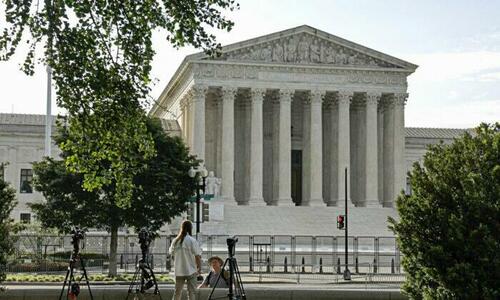The U.S. Supreme Court on Thursday took an unusual step to distance the Federal Reserve from broader legal challenges to the firing protections of independent federal agencies, offering a measure of reassurance to investors and policymakers concerned about political interference with the central bank.
In a brief, unsigned order, the Court allowed the Trump administration’s removal of two officials - from the National Labor Relations Board and the Merit Systems Protection Board - to stand while litigation proceeds. But it pointedly rejected the plaintiffs’ assertion that the outcome of their case would implicate the Federal Reserve or its top officials.
"The Federal Reserve is a uniquely structured, quasi-private entity that follows in the distinct historical tradition of the First and Second Banks of the United States," the Court wrote, seeking to draw a clear line between the central bank and other government agencies targeted in the litigation.
Though the case could eventually return to the Court on its merits, the justices’ decision to preemptively shield the Fed from the implications of their order sends a strong signal: the legal basis for "for-cause" removal protections for members of the Fed’s Board of Governors and the Federal Open Market Committee remains intact - for now.
Fed’s Independence at Stake
The decision comes as the legal foundation of the 1935 precedent Humphrey’s Executor v. United States, which protects independent agency officials from at-will removal by the president, faces renewed scrutiny. Former acting Solicitor General Sarah Harris said earlier this year that the Justice Department would push to overturn that decision.
The concern is not academic. President Donald Trump’s public frustration with Fed Chair Jerome Powell - whom he nominated - sparked fears that a second Trump term could bring efforts to reshape the Fed through firings or intimidation. In April, Trump’s former top economic adviser Kevin Hassett said the president would “continue to study” whether Powell could be removed before his term ends in 2026.
Although Trump later walked back any suggestion of firing Powell, calling him "Mr. Too Late" and a "major loser" for resisting rate cuts, the ongoing legal wrangling over firing protections has kept markets on edge.
The Federal Reserve has held interest rates steady between 4.25% and 4.5% as it evaluates the effects of Trump-era tariffs on inflation and the labor market.
Market Implications
Goldman Sachs analysts said Thursday’s order offers meaningful reassurance that statutory changes to the Fed’s independence are unlikely in the near term.
"The Court’s decision to preemptively signal that it views the Federal Reserve differently than other government agencies strongly suggests that it is unlikely to grant the President permission to replace governors without ‘cause’," the investment bank wrote in a Thursday note.
According to Goldman, that lowers the risk of politically motivated changes to monetary policy, which could otherwise trigger inflation, weaken the dollar, and unsettle equity markets. While analysts still see potential for political rhetoric to erode public trust in the Fed, they say the legal foundation appears more secure following the Court’s signal.
Dissenting Voices
Not everyone is convinced the Fed is immune from political reshuffling. Lev Menand, a Columbia Law School professor and former Treasury official, told the Financial Times that the Court’s carve-out for the central bank doesn’t hold water.
“While the regional Federal Reserve Banks are quasi-private, the Board in D.C. is a public agency - there’s nothing private about it,” he said. "Nor is it unique. It’s a multi-member board just like the NLRB."
Daniel Tarullo, a former Fed governor now at Harvard Law School, sees the Court’s language as a stabilizing force. "The Court went out of its way to rebut the argument that its probable broad rollback of Humphrey’s Executor will endanger the Fed’s monetary policy independence," he said. "That certainly augurs well for the Fed."
Source link


